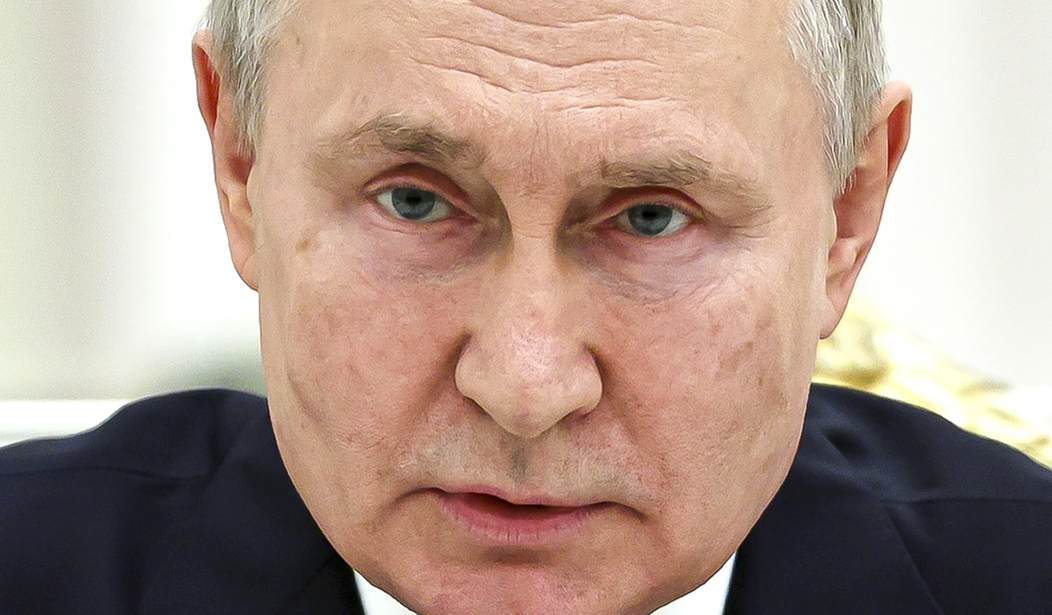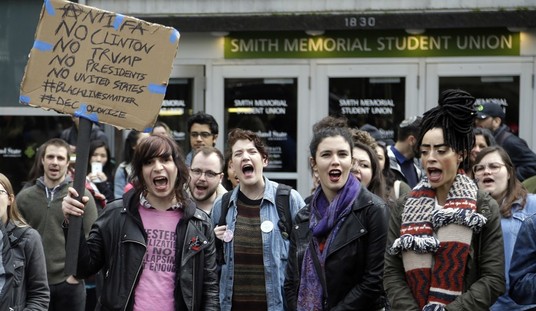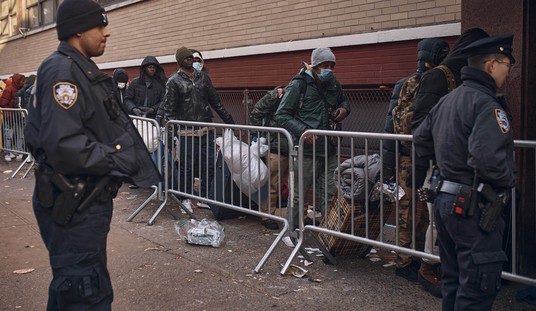Ukraine may or may not have killed the Russian admiral in charge of their Crimean headquarters, as they first claimed, but their attack succeeded nonetheless. The Ukrainians “severely” damaged both the HQ and two ships undergoing repairs in a series of attacks on the key port of Sevastopol, endangering Russian navy operations in the Black Sea.
Now, satellite and intel data show that the Russians have retreated to lesser ports in Crimea and in Russia proper, putting them out of range of attacks on Ukrainian merchant-marine commerce:
Russia has withdrawn the bulk of its Black Sea Fleet from its main base in occupied Crimea, a potent acknowledgment of how Ukrainian missile and drone strikes are challenging Moscow’s hold on the peninsula.
Russia has moved powerful vessels including three attack submarines and two frigates from Sevastopol to other ports in Russia and Crimea that offer better protection, according to Western officials and satellite images verified by naval experts. The Russian Defense Ministry didn’t respond to a request for comment.
The move represents a remarkable setback for Russian President Vladimir Putin, whose military seizure of Crimea in 2014 marked the opening shots in his attempt to take control of Ukraine. His full-scale invasion of last year has now boomeranged, forcing the removal of ships from a port that was first claimed by Russia in 1783 under Catherine the Great.
A few weeks ago, the Ukrainians began an offensive on Russian positions in Crimea, mainly focused on the strategic naval base in Sevastopol. The cruise missile and drone attacks have continued, and have been remarkably surgical — even as the Russians admitted two weeks ago, when they lost both their HQ and their backup communications center in Sevastopol:
Friday’s attack is Kyiv’s third major success in 10 days. During that time, Ukraine destroyed a Russian submarine and a large landing ship by hitting a dry dock in Sevastopol, and blew up the Black Sea Fleet’s backup communications headquarters situated in a bunker on the outskirts of the city.
The Russian-appointed governor of Sevastopol, Mikhail Razvozhaev, said no civilian areas had been damaged by the attack. The Russian Ministry of Defense, which routinely minimizes or denies Russian losses, said a service member was missing after the attack on what it described as the “historic headquarters” of the fleet. The ministry said Russian air defenses intercepted five missiles.
This demonstrates the skill and intel-gathering of Ukrainian forces in the Crimea campaign. It also exposes just how difficult the Russian position is on the peninsula now, and how poor their screening defenses are for their naval assets. Given how small or basically non-existent Ukraine’s navy is, one would have expected the Russians to bolster these defenses before the invasion, especially since a naval blockade would have been an obvious choice to force Kyiv into an eventual surrender.
Now, it looks like the Black Sea fleet will be limited to missile and drone attacks on land-based targets:
The immediate military effects of the move are limited, as the ships will still be able to fire cruise missiles on civilian infrastructure such as ports and power grids, naval experts said. Ukraine’s strikes had already broken the fleet’s blockade of Ukrainian ports, denying Russian access to parts of the Black Sea and opening a new corridor for Ukraine to dispatch economically vital grain shipments. …
Ukraine’s breaking of Russian military dominance in the Black Sea could also boost the Ukrainian economy. Ukraine opened up a new maritime corridor for civilian ships transiting to and from Odesa as an alternative to the Turkish- and U.N.-backed agreement. The new shipping lane hugs Ukraine’s coastline, which is protected by the Ukrainian military, before entering the coastal waters of Romania and Bulgaria, which are members of the North Atlantic Treaty Organization.
The first ship to leave via the corridor sailed in August, with a series of ships entering and leaving the shipping lane at an increasing pace in recent days. Another 12 ships were waiting to enter the corridor as of Wednesday, the Ukrainian navy said.
Don’t expect the Russians to resupply their fleet, either. Turkey has closed the Bosphorus to all military vessels except its own under a 1936 treaty which allows them to control that traffic. Unless Russia builds new ships in its own Black Sea ports, they cannot replace any losses.
The news is just as bad on land for Russia. Ukraine announced yesterday that they are “starting to liberate Crimea,” and had landed commando forces that were already pushing Russian troops into retreat, or worse. Ukrainian forces have been doing this for a while, but yesterday’s announcement gave the strongest suggestion yet that this is now a campaign rather than recon-in-force operations.
That, combined with the Russian retreat from its main naval base, sends a deliberate signal to Moscow that Putin is failing:
“It’s a very good sign [that] we are starting to liberate Crimea,” Ukrainian lawmaker Oleksandr Merezhko told the Washington Examiner on Wednesday. “Crimea used to be a symbol of Russian success. And when we are putting this into question, when we are liberating it, it sends a very strong signal that Putin didn’t deliver, that he totally failed in his strategy and his policy.”
On the other hand, Russian ships appear to have retreated, according to private-sector satellite imagery analysis and Western officials, in the wake of Ukrainian strikes on their fleet headquarters and dry docks that mangled a Russian attack submarine and landing vessel.
Bear in mind that the claims about commando operations are still largely unconfirmed, except for the videos which can’t show the scope of the campaign. However, the Russian navy’s retreat from their main base is confirmed by independent sources — and it’s not too difficult to imagine that Ukraine would press their advantage in Russia’s disarray.
The news looked equally grim for Moscow in the Bakhmut area, according to ISW, which also covered the naval retreat in last night’s assessment:
Ukrainian forces continued offensive operations near Bakhmut and in western Zaporizhia Oblast and marginally advanced on October 4. Ukrainian forces continued ground attacks towards the rail line between Klishchiivka (7km southwest of Bakhmut) and Andriivka (10km southwest of Bakhmut), and the Ukrainian General Staff stated that Ukrainian forces achieved partial success near these settlements.[7] Geolocated footage published on October 4 indicates that Ukrainian forces marginally advanced east of Novoprokopivka (5km southeast of Robotyne) in western Zaporizhia Oblast, and the Ukrainian General Staff also reported that Ukrainian forces achieved partial success west of Robotyne.[8] Some Russian sources claimed that Ukrainian forces advanced up to a Russian trench line on the Robotyne-Kopani line (5km northwest of Robotyne).[9]
If that’s grim for Moscow, it’s frustrating for Kyiv and their allies, too. They had hoped to see Ukraine break through the lines in this region and force Russian troops into a rout, but that hasn’t happened — yet, anyway. With the autumn rain season coming, the lines will likely firm up for a while, as ISW covers in another section. However, the continued pressure along the Donbas lines prevents Russia from reinforcing Crimea, and the earlier seizure of Kherson makes that difficult even if they had spare troops to send.
How long can the Russians play defense in both theaters? The retreat of Russia’s navy from Sevastopol might give us a hint of an answer.








Join the conversation as a VIP Member